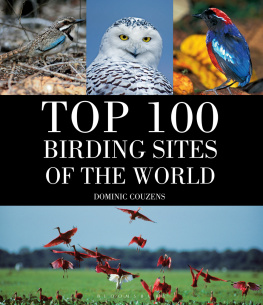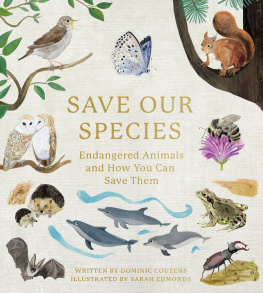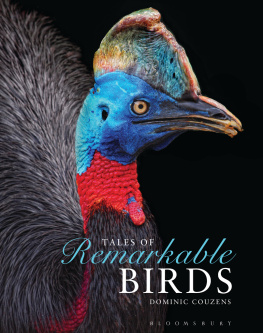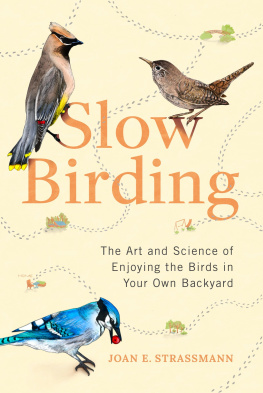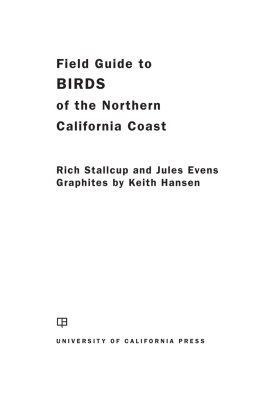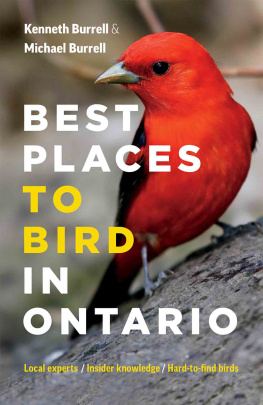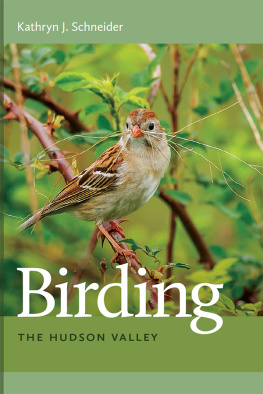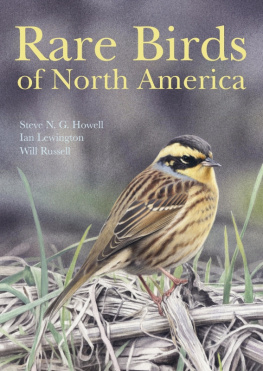

This electronic edition published in 2015 by Bloomsbury Publishing Plc
First published in 2008 by New Holland Publishers (UK) Ltd
Copyright 2013, 2008 in text: Dominic Couzens
Copyright 2013, 2008 in photographs: as credited below
Copyright 2013, 2008 Bloomsbury Publishing Plc
The right of Dominic Couzens to be identified as the author of this work has been asserted by him in accordance with the Copyright, Designs and Patents Act 1988.
All rights reserved
You may not copy, distribute, transmit, reproduce or otherwise make available this publication (or any part of it) in any form, or by any means (including without limitation electronic, digital, optical, mechanical, photocopying, printing, recording or otherwise), without the prior written permission of the publisher. Any person who does any unauthorised act in relation to this publication may be liable to criminal prosecution and civil claims for damages.
Bloomsbury Publishing Plc, 50 Bedford Square, London WC1B 3DP
www.bloomsbury.com
Bloomsbury is a registered trademark of Bloomsbury Publishing Plc
A CIP catalogue record for this book is available from the British Library
Although the publishers have made every effort to ensure that information contained in this book was meticulously researched and correct at the time of going to press, they accept no responsibility for any inaccuracies, loss, injury or inconvenience sustained by any person using this book as reference.
Designer: Keisha Galbraith
ISBN: (print) 978-1-4729-1984-7
ISBN: (ePub) 978-1-4729-1985-4
ISBN: (ePDF) 978-1-4729-1986-1
To find out more about our authors and books visit www.bloomsbury.com. Here you will find extracts, author interviews, details of forthcoming events and the option to sign up for our newsletters.
All page numbers refer to the print edition.
Cartography by John Loubser
Special thanks to Chris Bradshaw, Mark Finn, Kathy Ombler and Pippa Parker for checking various chapters
Photographs (a = above, b= below, l = left, r = right) by AGAMI (pages
Page 1: Scarlet-headed Blackbird in Brazil
: Osprey in Finland

CONTENTS
Introduction
This book is a celebration of the world of birds, from the vast flocks of flamingos in the Great Rift Valley and the seabird colonies of Britain to the river of raptors in Mexico and New Guineas birds-of-paradise. Through the description of 100 of the worlds top birding sites it gives an overall view of the variety and abundance of birds on this planet, something that I hope will delight and inspire readers. It is, therefore, essentially an aspirational book. It should not, as such, be taken as a site guide from which you can plot your way to see a huge number of species, although you can use it for this purpose. Instead, it is an introduction to what birds are found where on Earth, and to where one might have the greatest experiences looking for them.
The 100 sites are fairly evenly divided between the continents in order to offer a fair spread of sites around the world. Each site has its own mini-chapter, with a description of the place, the habitat it encompasses, what birds occur there and, overall, why it is included in the book. Hopefully, the uniqueness of each place will come across, and the descriptions of what is found there will go well beyond a banal list of what has been recorded. I have been sparing in details about how to get there and where to stay because, as mentioned above, this is not a where to watch guide in the usual sense. There are plenty of books that tell you that sort of information, and most of these are listed in the bibliography.
The book will stand or fall on the places it includes, and I expect to stir up some arguments and emotions by presenting this finished product to you. You will doubtless be appalled that certain of your favourites are excluded, and you will be even more aggravated by what is included instead perfectly livid, indeed, when you realise that the sites are given a World Ranking. So some explanation about the construction of the contents might be useful here. A preliminary list of sites was initially selected by a small editorial team at New Holland Publishers, so I hope that they will share the blame with me. Incidentally, I acknowledge that even with 100 sites to choose from, there are well in excess of another 100 for which a good case could be made for their inclusion, and happily there are simply thousands of places on this earth which can, at one time or another, enthrall birders and ecotourists with the spectacle or variety they offer.
Nevertheless, a choice had to be made, and certain considerations soon became apparent. For example, although a huge list of species is instructive, it cannot be anything but a rough guide of how good a place is. Long lists of species recorded may reflect more about the attention given to them by birders than their intrinsic richness. Another point is that, if high lists were the only guide, this book would contain nothing but tropical forests, the majority of which would be in South America.
So, once freed from the burden of working solely from numbers, other aspects of a place become important. Among these are: the sheer quality of birds to be found there (how rare, how beautiful, if they occur in spectacular numbers, and so on); how important the site is on a world scale for the conservation of the relevant habitat and/or species; the intrinsic beauty of the site; the degree to which a site is good for birds and birding all year round; the history and both ornithological and environmental significance of the site; the ease and comfort of birding the site, where relevant; the possibility of delighting in other features, such as other animals or natural or archaeological spectaculars; and yes, perhaps, the fame and star quality of the place. On the negative side, where a site has become unwise or dangerous to visit in recent times (Afghanistan or Kashmir, for example), it had been deliberately left out.
In the end, despite all of this, the selection of sites was, of necessity and expedience, largely a matter of personal experience. To begin with, we picked the sites we knew ourselves, or had heard about. During the research for the book, of course, many more places came to light, and a good number of these were considered sufficiently good to be included. However, there is no doubt that many places with at least a good a claim as those that are included have been overlooked, and I apologize for this. If your favourite has been missed out, or if you think that the selections for a particular region are flawed, please do let us know.
Finally, it is important to state that all selections were made free from commercial pressure. In this book there are some sites that are profit-making concerns, but we have chosen to include them for ornithological reasons only; in some cases, it would simply be disingenuous not to. None will have known for sure that they have been included in this book prior to publication, and none paid for the privilege. Nobody offered or gave free accommodation during the research, either.
I hope, therefore, that you will enjoy this offering of the 100 sites which I believe offer the best birding experiences in the world.
Dominic Couzens, Dorset, UK
Next page
